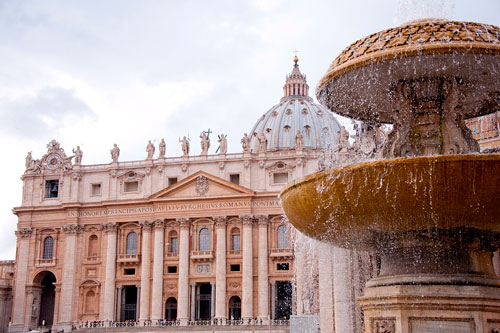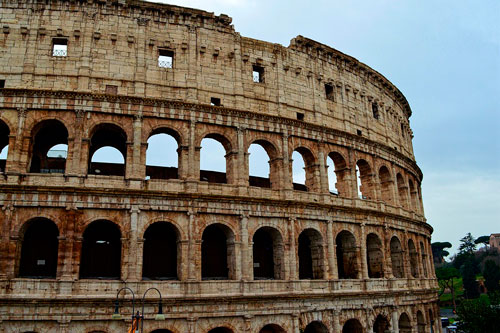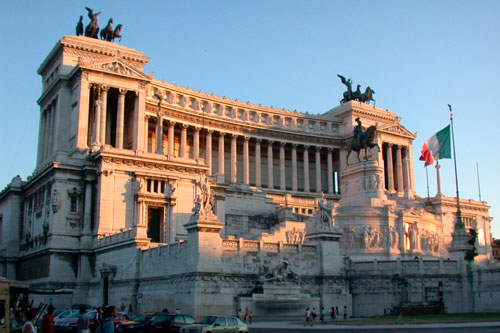The
SURROUNDINGS

Only 20 minutes away from our agriturismo, you can enjoy and go through the frightening “Parco dei Mostri” of Bomarzo.
The park covers an area of about three hectares, in a conifer and broadleaf forest. It hosts a large number of sculptures of different size dating back to the XVI century and representing mythological animals but also buildings reflecting the classical culture, which cancel the rules of perspective and aesthetics, in order to confuse the visitor. The sculptures, made of basalt, are marked by enigmatic and mysterious writings.
The original purpose for which the park was created is not known: over time many hypotheses have been formulated, according to which the place is an “initiatory path”.
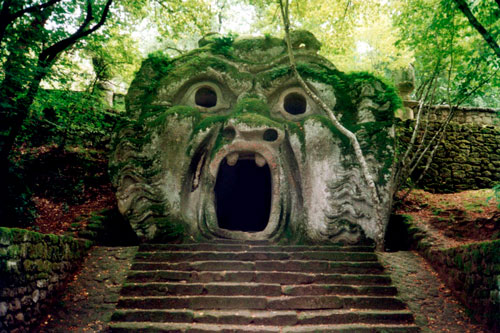
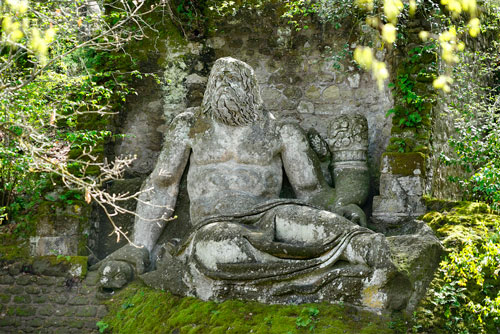
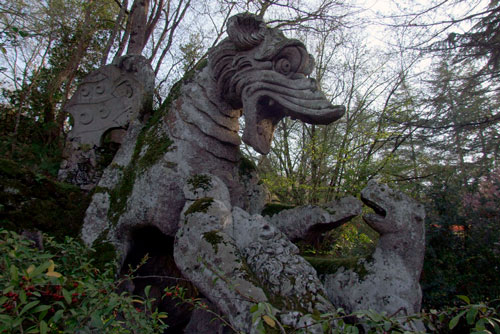



About 20 minutes away from our agriturismo, Narni Sotterranea (the underground town of Narni) is an interesting site discovered at the end of the 1970s by a team of speleologists and the first historical evidence dates back to 600 BC.
The site includes a church where you can admire paintings by Umbrian artists of the Middle Ages, an ancient cistern of the first century BC carved into the rock, and a room where you can take a virtual tour of the Formina Roman Aqueduct and discover the ancient hydraulics.
Do not miss the Hall of Torture (as it is called in the documents of the Vatican archives) which, from the mid-16th century to the mid-19th century, was one of the headquarters of the Holy Office or the Court of the Inquisition.
The visit ends in the church of San Domenico, former Santa Maria Maggiore, which was the cathedral of Narni until the 13th century. Here you can admire the archaeological discoveries, including a Byzantine mosaic of the 6th century.
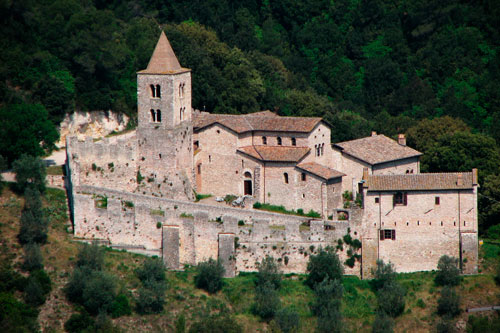
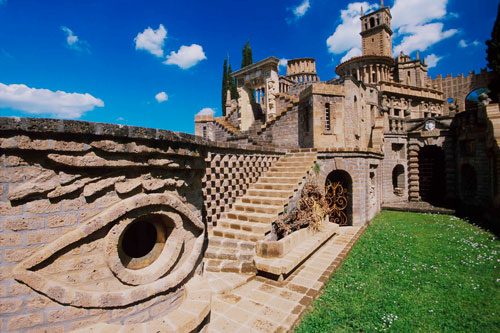




The city of Viterbo is about 20 minutes away from our agriturismo. It is known as the “City of Popes” as it was the Holy See in the thirteenth century and for about 24 years its papal palace hosted several Popes or their election.
A city rich in history, which in 1962 was awarded the Silver medal for Civil Valour for the countless fallen and the serious damage reported after the Allied bombing of 1943-44.
It is famous for the “Macchina di Santa Rosa”, a traditional and spectacular event which takes place every year in the evening of September 3rd, in honour of the Saint patron: it is an illuminated 30-metre-high “tower” which is carried by 100 men on their shoulders throughout the city. Moreover, in 2013 the “Macchina di Santa Rosa” was included in the UNESCO world heritage list… Not to be missed!
visit the Macchina di Santa Rosa website
Finally, a few minutes from Viterbo, you can reach the stunning Villa Lante, famous for its Italian-style garden attributed to Vignola (Iacopo Barozzi), and Palazzo Farnese, one of the best examples of Mannerist architecture.

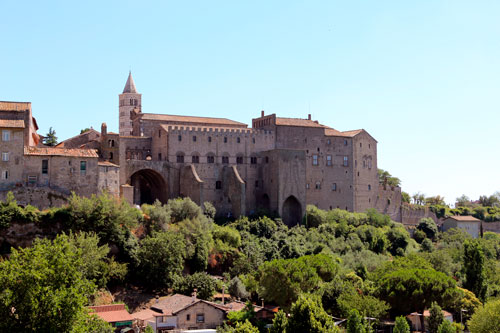
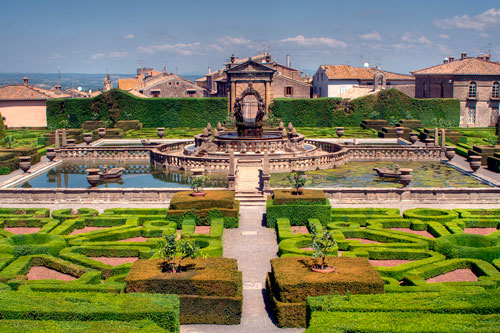



Once you have visited Viterbo, you can relax at the Thermal baths which were once used by Etruscans and Romans. From the Medieval age they were also used by the Popes; in particular, Pope Nicholas V had a marvellous palace built on site that could be used during his treatment periods at the thermal baths.
The complex is very big and includes different thermal springs also used for therapeutic purposes and the thermal muds. If you want to spend some relaxing hours this is the perfect place!
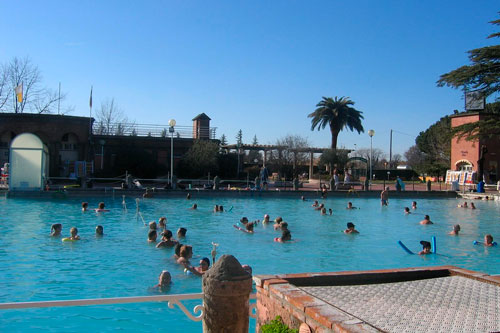

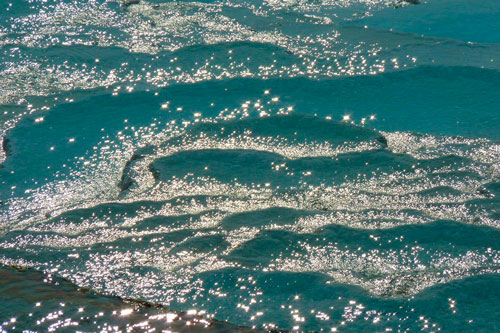



About 30 minutes from our agriturismo you will be immersed in an amazing landscape: the Marmore Falls, among the highest falls in Europe, are framed by a large natural park.
As for the origins of the waterfall, a legend tells that a magical creature, a nymph named Nera, fell in love with the young shepherd Velino. It was difficult for them to meet because the belonged to two different worlds. Juno, enraged, turned Nera into a river as she had transgressed the rules which did not allow love with humans. Velino threw himself headlong from the Marmore cliff, believing that Nera was drowning in that water that was not there before. Jupiter, to avoid his death, turned him into water during his fall, so as to save him and reunite he and Nera forever.
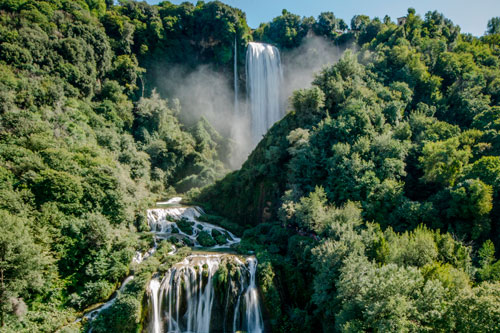
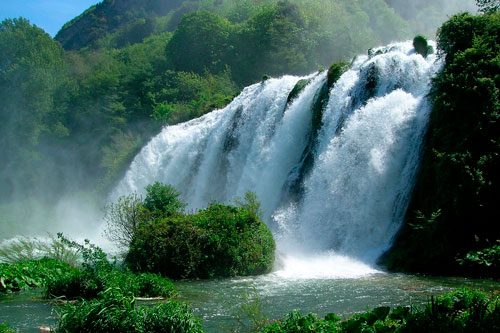
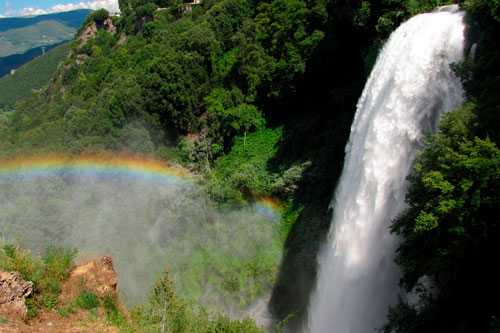



30 minutes away from our agriturismo, Terni is an interesting town rich in history and works of art dating back to the Roman age, through the Baroque until the creation of the Kingdom of Italy.
The legend of the town of Terni and its coat of arms tells that many years ago the presence of a terrible dragon named Thyrus on the territory caused fear and anxiety between the citizens, and that not even the bravest ones, summoned by the Council of the Elderly, dared to venture in that area. Nobody seemed able to solve that problem. When the Council was about to give up the battle, a young boy belonging to the noble family of Cittadini, of Terni, came forward. He wore a shining armour and showed all his pride and desire to challenge the horrible dragon: “I’ll go visit that monster. What do you think about it?”, he said to the Elderly, who accepted his decision and blessed him, whishing him good luck. The brave boy surprised the monster as it was sleeping, and this seemed to make his task easier. But while he was about to hit it with his spear, the dragon stood up and jumped towards him. A dreadful battle took place, during which the dragon prevailed. But suddenly a ray of sunlight reflected in the armour blinded the dragon: that was the right opportunity, the young boy threw his spear and pierced the monster. All citizens immediately gathered at the battle site to see what had happened. Festive days followed to celebrate the boy, who was awarded with the lands that once belonged to the monster.
For the most romantic ones, St. Valentine events take place throughout the month of February in Terni in honour of Saint Valentine, patron saint of the town and protector of lovers.
Finally, along with the celebrations for St. Valentine, you can enjoy the popular chocolate festival “Cioccolentino”.
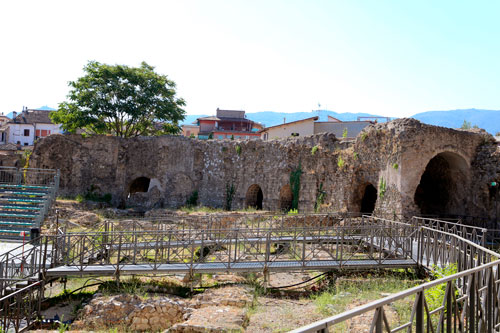
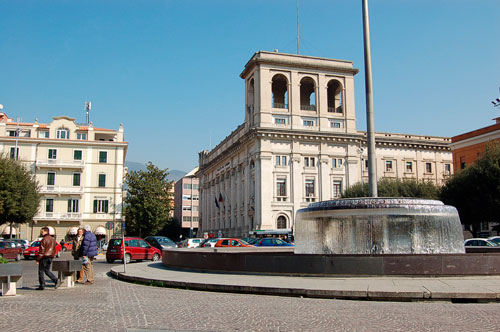




30 minutes away from our agriturismo you can visit the beautiful town of Orvieto and its impressive Duomo, a masterpiece of the Italian gothic architecture, whose façade is decorated by a large series of bas reliefs and sculptures by Sienese architect Lorenzo Maitani.
Through the alleys of the small and quaint old town you can visit the famous St. Patrick’s Well, a work of art of engineering built between 1527 and 1537 at the behest of Pope Clement VII. Access to the well is ensured by two one-way helical staircases, completely autonomous and served by two different doors. Its purpose, other than being a perfect hiding place, was also guaranteeing water during calamities or periods of siege.
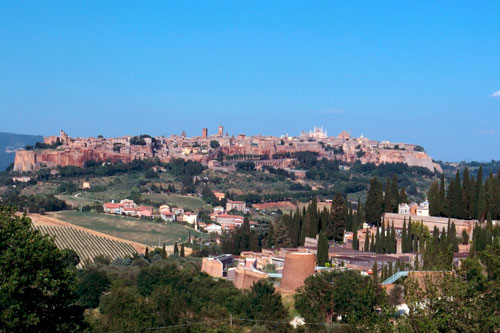
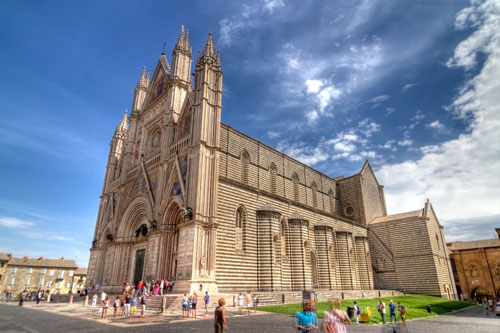




About 40 minutes away from our agriturismo you will find one of the most beautiful Italian villages. Civita di Bagnoregio, also called “the dying city” is inhabited by only 16 people and can be reached only on foot over a long bridge.
The village still features medieval houses, the church of Saint Donat which overlooks the main square and hosts the Wooden Crucifix, the Alemanni Palace (home of the Geological and Landslide museum), the Episcopal Palace, a mill of the 16th century, the remains of the birthplace of Saint Bonaventure and the door of Saint Mary, with two lions holding a human head in their paws, in memory of a popular revolt of the inhabitants of Civita against the Orvieto family of the Monaldeschi.
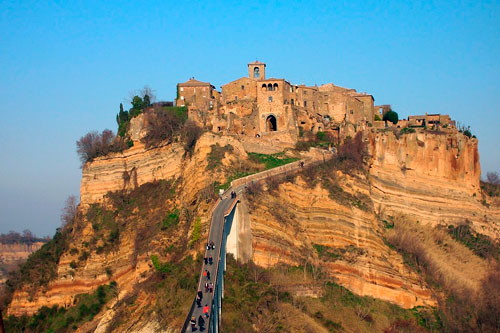
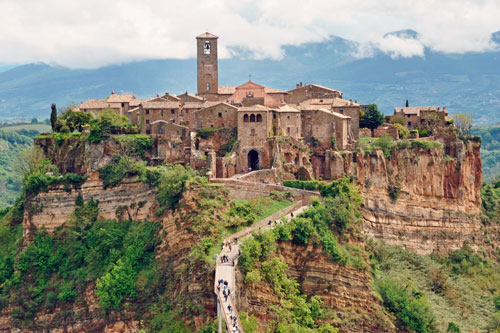
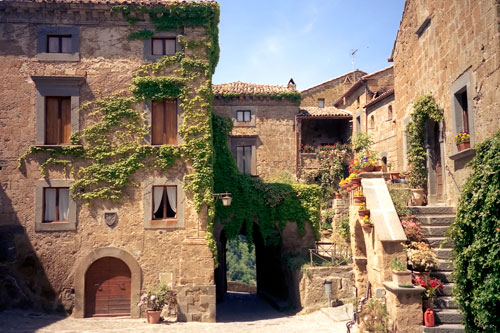



One hour away from our agriturismo, you can enjoy and visit the amazing city of Perugia, home of important artists like Perugino and Pinturicchio and place of artistic training for important Renaissance characters such as Raffaello, Piero della Francesca, Pietro Aretino and Luca Signorelli.
Perugia was founded by the Etruscans and its historical centre still has a harmonious medieval appearance. Many monuments and places of interests are worth a visit, among which IV Novembre square with its Fontana Maggiore, the Etruscan Arch, the Cathedral of Saint Lawrence, the national Gallery of Umbria and much more.
For the chocolate lovers, Perugia is also known as the “City of chocolate” and, in October, it hosts the popular event “Eurochocolate”, the European festival of chocolate.
visit the EuroChocolate website
For the lovers of jazz music, the Umbria Jazz cannot be missed. It is the most important Italian festival of jazz and it takes place in July with artists from all over the world.
Another interesting cultural event is the International Festival of Journalism which takes place in April. It was started in 2006 to speak about journalism, information, freedom of press and democracy in which the protagonists of information, coming from all over the world, meet citizens, readers, students and professionals for some days, for a continuous sharing of ideas and opinions.
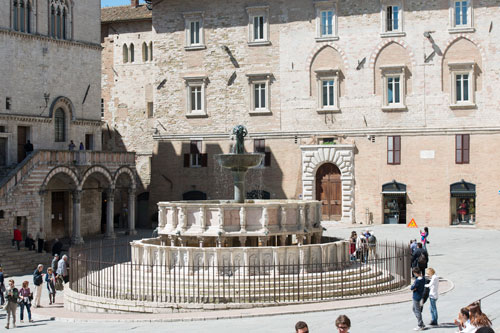
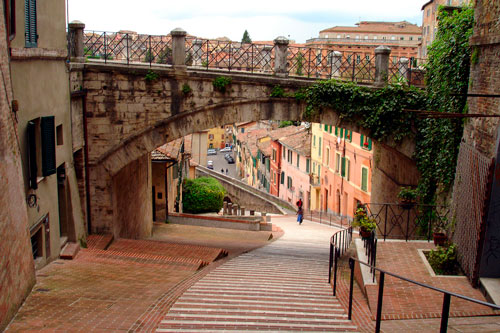
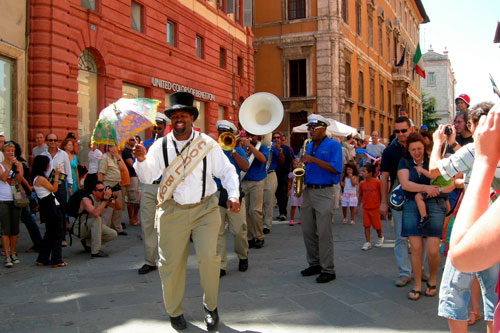


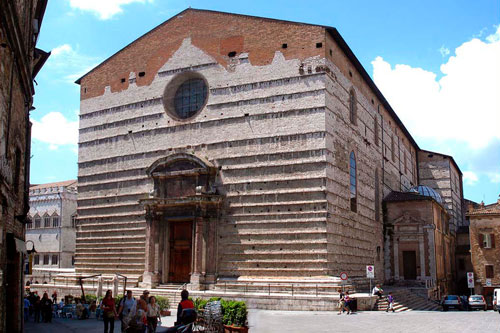
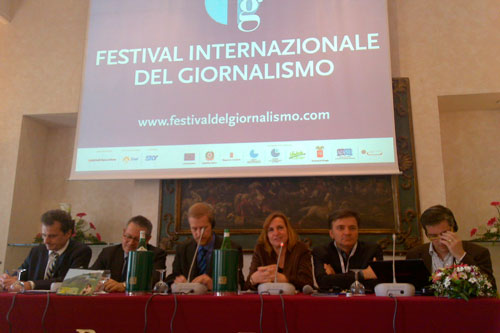

Ad un’ora dal nostro agriturismo vi troverete ad Assisi, deliziosa cittadina medievale, città simbolo della pace, ricca di arte e di storia.
È conosciuta per essere stata la città natale di San Francesco, patrono d’Italia, e di Santa Chiara.
Sicuramente da non perdere la magnifica Basilica di San Francesco, costruita nell’XIII secolo e composta da due parti: la Chiesa Inferiore e la Chiesa Superiore. La prima comprende la Cappella di Santa Caterina, la navata dipinta da Giotto e l’altare maggiore con la tomba del Santo frate, sopra il quale troneggiano gli affreschi in cui Giotto ha glorificato le tre virtù fondamentali della regola francescana, povertà, obbedienza e castità; la Chiesa Superiore invece colpisce per la sua facciata gotica lineare ed elegante al cui centro troneggia un grande rosone.
Tra i luoghi da visitare c’è la Piazza del Comune attorno a cui spicca il famoso Tempio di Minerva, risalente al I secolo a.C., la Chiesa Nuova, realizzata nel ‘600 sulla casa natale di San Francesco, la Basilica di Santa Chiara e la Rocca Maggiore con la sua vista mozzafiato.
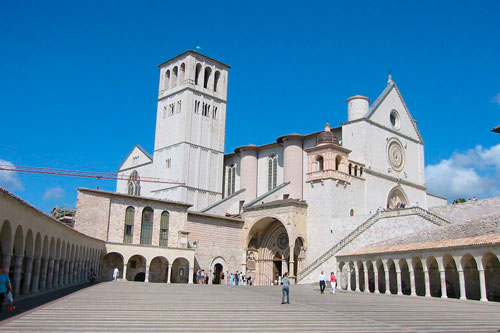
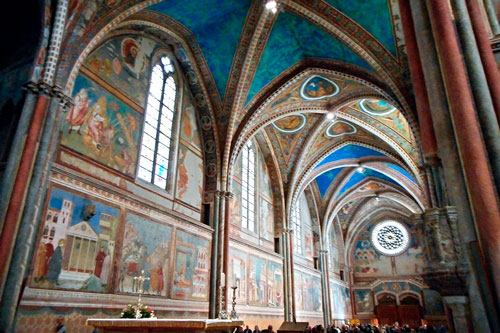




Roma si trova a circa un’ora dall’agriturismo ed è raggiungibile sia in auto che in treno dalla stazione di Orte. È una città che non ha bisogno di presentazioni, per questo vi riportiamo una frase che ne descrive il fascino e la grandezza:
“Roma non è una città come tutte le altre. È un grande museo, un salotto da attraversare in punta di piedi” – Alberto Sordi
